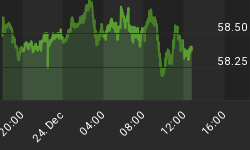In real terms, February Personal Consumption Expenditures (PCE) increased by 0.2% after January's 0.3% rise. It was a 0.5% increase in real service sector spending that yielded a positive change on overall real PCE. Real durable goods expenditures fell 0.1% and real nondurable goods expenditures fell 0.4%. Real PCE services increased 0.5%, fueled by a 9.5% rise in expenditures for household utilities (electricity and gas). As you may recall, February was considerably colder than usual. In fact, in terms of heating degree days, February 2007 was the coldest February since that of 1979. March warmed up. The question is whether households spent their March savings on utilities at the malls or saved these savings. Given that their saving rate remains at Great Depression level lows - that is, they are running a deficit - and given all the angst about the value of their main retirement nest egg, their homes, I have a feeling they did not hit the malls with vigor in March. The January-February average of real PCE suggests that first-quarter average real PCE is likely to come in at an annualized pace of about 3-1/2% -- down from the fourth quarter's annualized growth of 4.2%. Quarterly-averaging arithmetic and economic theory point to a further deceleration in real PCE growth in the second quarter. The February durable goods orders data reported earlier this week suggest that real expenditures on business equipment and software will contract for the second quarter in a row. Putting it all together, it looks as though first-quarter real GDP growth will be below 2-1/2%. The FOMC can live with that, but given the slower trajectory of real PCE growth, the ongoing turmoil in the residential real estate market and that "the magnitude of the slowdown [in business capital expenditures] has been somewhat greater than would be expected given the normal evolution of the business cycle," the Fed must be getting more nervous about the prospects for a recession later this year.
The FOMC might be nervous about the higher probabilities of a recession, but it has to keep up its guard about the prospects of an upside breakout in consumer inflation. The core PCE price index increased 0.3% month-to-month in February and 2.40% year-over-year. Most of the moderation in year-over-year core PCE inflation has been erased from its cycle high of 2.44% set back in August 2006. Although increases in the rent of shelter - explicit and imputed - continue to raise the roof on core inflation, apparel and medical care prices are accelerating. The faster pace of apparel prices could be due to the decline in the dollar. Rent increases are likely to moderate with condo-flippers desperate to bring in a little monthly income to help pay the mortgage, taxes, insurance and condo fees on their empty investments. And inflation is a lagging indicator. The FOMC surely is aware of all this but because it still does not have a lot of Street cred, it has to continue to threaten to commence again in raising the fed funds rate even though it is loathe to do so.
















